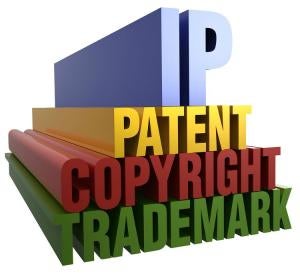With an increasingly competitive marketplace challenging traditional business models, protecting intellectual property in the automotive industry has never been more vital. Among a business's most valuable assets are the four types of intellectual property ("IP"): trademarks, copyrights, patents, and trade secrets. But, what is IP and why is it important to protect it?
Trademark
A trademark is a word, name, symbol, or logo used to advertise or market a product or a service. Trademarks help to identify and distinguish the product or service from its competitors. Although "common law" rights in a trademark can be established merely by using it in commerce, registering the trademark grants the holder the legal presumption of exclusive ownership, and notifies the public that the user claims ownership.
Trademarks can be protected through registration with the state or federal government. If a trademark is registered, someone with a similar mark who applies for protection may be denied and should consider ceasing to use the possibly conflicting mark to avoid litigation. Beyond registration, trademark owners can also hire a "watch service" to monitor trademark registries for copycats, or to watch domain names to see if anyone is selling competing products online. Another cost-effective way to stay aware of whether your trademark is being used, or appears on the news or on the Web, is to create a Google Alert. However, it would be risky to rely solely on Google Alerts, or simply periodically "surf the Web" yourself, because those searches do not flag trademark registries or domain names.
Another way to protect intellectual property is by securing trademarks for future expansions of a product line. For example, when Cadillac introduced its new CT6 flagship in 2014, it began to seek trademark registration coverage for not only CT6, but CT2, CT3, CT4, CT5, CT7, and CT8 as well. By doing so, Cadillac avoided the situation that Audi found itself in with Fiat Chrysler earlier this year. Fiat Chrysler Automobiles, in exchange for an undisclosed trademark previously owned by Audi, agreed to release two of its badges, Q2 and Q4. Because Audi owned the trademarks to the rest of the Q1 through Q9 badges, securing the "Q2" and "Q4" trademarks helps to strengthen its recognition in the marketplace and prevent consumer confusion.
Copyright
A copyright protects an original work of authorship "fixed in a tangible medium of expression." For example, it protects books and other written works, artworks and other images, music, and many other things. While copyrights are often associated with protecting novelists and musicians, they can also be used to protect computer software, which is a huge component of modern cars. Although copyright exists the moment the work is created, the copyright must be registered before a lawsuit can be filed for infringement of a U.S. work. Registered works can be eligible for statutory money damages and attorneys' fees in successful litigation. Therefore, best practice is to register works that are very important to your business.
Beyond registration, if someone is infringing a copyright (or a trademark or patent for that matter), an attorney can send a cease-and-desist letter to the infringer, and, if the infringement is taking place online, a Digital Millennium Copyright Act (DMCA) Takedown Notice to the web host or platform. Although issuing the DMCA Takedown Notice in copyright matters does not entitle the owner to damages, the Internet service provider is required to remove material that appears to infringe on a copyright.
Patent
Patents come in a few different varieties, but the two most commonly pursued are utility and design patents. A utility patent covers an invention that produces a function or result, such as an engine design or other mechanical or electrical type device. A design patent protects purely artistic or ornamental design — a non-functional characteristic or feature of a manufactured item. To protect a patent within the United States, it must be registered with the U.S. Patent and Trademark Office. There is no "common law," use only protection for patents. A U.S. patent gives the owner the exclusive right to exclude others from making, using, offering to sell, selling, or importing the product for a specific period of time, such as 20 years presently for a utility patent.
Trade Secret
Finally, a trade secret is business information that is kept scrupulously confidential, such as product development plans, financials, client lists, highly innovative ideas, or computer software. The best way to ensure protection of trade secrets is to take reasonable measures and precautions to keep them confidential, such as maintaining strict company policies and access by only those "with a specific need to know." Employees, independent contractors (such as consultants or other non-employee workers and representatives), and business partners can be required to sign confidentiality/trade secrets non-disclosure agreements. Unlike patents, trade secret protection can extend for an unlimited duration, provided it is kept "secret."
As with most matters, careful planning to protect your IP with an expert such as an experienced attorney can save time, money, and grief in the long run.
Part One- Protect Your Automotive Industry Intellectual Property or Else
This article was co-written by Janelle Grigaitis, a summer associate at Varnum in 2016. Janelle is currently a student at Vanderbilt University Law School.




 i
i

